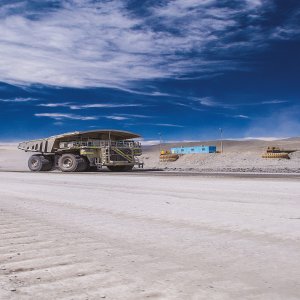The Dilemma of Human-Free Mines

STORY INLINE POST
It is only a matter of time before the industry achieves human-free mining, creating the dilemma of how to address the problem of a displaced workforce, says Jesús Flores, Director General of underground mining specialist Lasec. “In the next 10 years, robotics will play a key role in operational intelligence as mines will be managed remotely, reducing the need for a human presence on-site,” he says.
Flores believes digitalization is the right path because it allows the tracking of the real-time operating conditions of the whole mine. “Lasec is contributing to the digital revolution by offering technology solutions that add value to miners’ productive processes,” he says. “We provide operational intelligence though solutions such as high-definition and real-time video.”
While he is an advocate of digitalization, Flores also remains aware of the need to relocate the human staff displaced by technology. The solution lies in education, he says. “Technicians need to become specialized in Industry 4.0 as these services need to reach the deepest corners of a mine. There will be a decrease in the required number of human staff but also increases in the level of skill workers will need. Education is simply fundamental.” More specialized technology requires more specialized labor to manage it. Understanding the importance of this dynamic. Lasec provides its 200 employees with constant training to remain competitive.
Ultimately, Flores says the industry is willing to face the moral dilemma related to automation given the benefits it represents. “Energy efficiency in mines though Industry 4.0 implementation can decrease costs by up to 40 percent,” he says. For example, current mine-ventilation systems must function full time to prevent gas poisoning. But human-free mines will make ventilation needs almost obsolete.
The concept of a human-free mine also responds to the need to develop mines beyond human capabilities. “The deeper the mine is, the riskier it is to have humans working inside,” says Flores. “We work hard to guarantee we can provide our technologies regardless of the depth.” Lasec has strong participation in the state of Zacatecas, mostly applicable to underground mines, but it also operates in Goldcorp’s Peñasquito and Fresnillo’s Herradura open-pit mines. “Our technological solutions work equally for open-pit and underground mines,” he says.
But according to Flores, until automation takes place, it is also important to address the industry’s immediate needs. While waiting for human-free mines to be a reality, Lasec’s Smart Flow system helps to fully control an operation’s workforce. “This system tracks the location of staff in a mine in real-time and in an emergency, it takes only 10 seconds to notifies all miners to evacuate,” he says. It also records the location and functioning of vehicles and other mine resources. “Smart Flow identifies the mine’s operational conditions to improve mine management,” he adds.
The company is pioneering in R&D and has installed one of the world’s biggest and most advanced leaky feeder networks for Fresnillo and expanded across 270km. “The key value of this network is its functionality. Its usability is guaranteed up to 97 percent when the average for leaky feeders is 60 percent,” Flores says. “The high quality of the system’s operation allows integration of more functions and sensors within the mine.”
This system has become a binding security feature for many mine operators in Mexico. The network is implemented across all Fresnillo mines and in others belonging to Peñoles, Grupo México, First Majestic and Goldcorp, just to mention a few. “We ultimately contribute to the automation revolution by bringing tangible solutions to our clients so they understand the real value of these technologies to their production processes,” he adds.
























